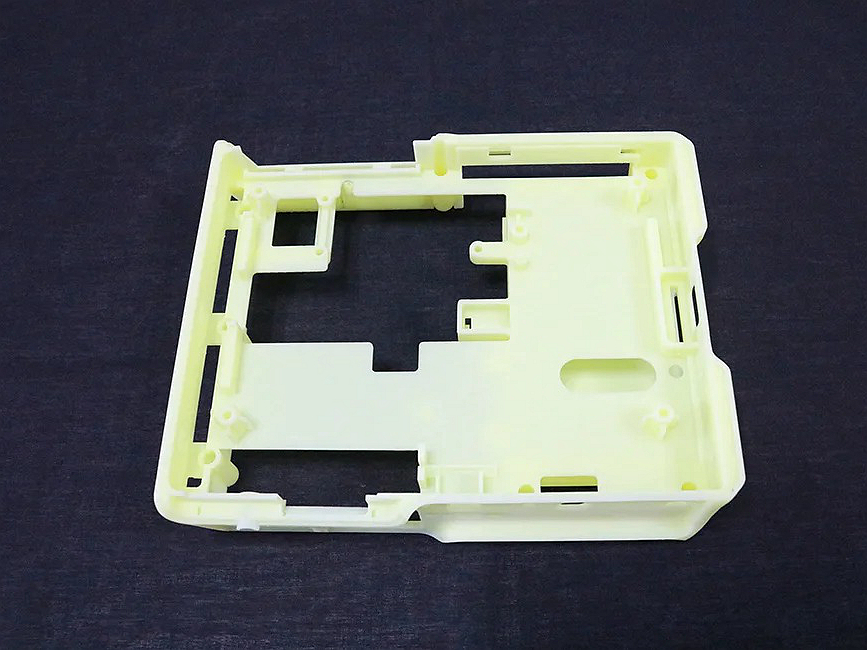What Is Laminated Object Manufacturing (LOM) 3D Printing?
Introduction
Laminated Object Manufacturing (LOM) is a unique additive manufacturing process recognized for its efficiency in building robust prototypes and tooling from layers of adhesive-coated materials such as paper, plastic, or composites. By systematically layering sheets bonded through heat and pressure and then precisely cutting each cross-section using laser or mechanical knives, LOM produces durable, cost-effective models quickly. Compared to CNC machining or injection molding, LOM is particularly advantageous for rapidly and economically creating large prototypes and patterns and with minimal waste.
At Neway, our industrial 3D printing services leverage LOM technology to efficiently deliver large-scale models, tooling patterns, and functional prototypes, helping companies accelerate product validation and shorten development cycles across diverse sectors.
How LOM Works: Process Principles
The Laminated Object Manufacturing process involves three core stages: material layering, bonding, and precise cutting. Initially, adhesive-coated sheets (such as paper or composite materials) are sequentially layered onto a build platform. Next, heat and pressure firmly bond these layers into a cohesive block. Finally, a computer-controlled laser or mechanical cutter precisely outlines each layer’s cross-section, slicing away excess material. The surrounding waste provides inherent structural support, simplifying the post-processing stage compared to other additive technologies like FDM or SLS.
Common LOM Materials
LOM technology utilizes specific sheet materials suited to different applications. Below are the main materials used in Neway’s LOM manufacturing processes:
Material | Density | Thermal Stability | Key Properties | Common Applications |
|---|---|---|---|---|
~0.7–0.9 g/cm³ | Up to ~120°C | Low-cost, easy post-processing, recyclable | Concept models, design prototypes | |
~1.2–1.4 g/cm³ | Up to ~80°C | Improved moisture resistance, smooth finish | Packaging prototypes, molds | |
~1.6–1.8 g/cm³ | Up to ~200°C | High strength, thermal stability, dimensional accuracy | Functional prototypes, tooling patterns |
Key Technical Features of LOM 3D Printing
LOM technology offers distinctive advantages in prototype fabrication, tooling, and large-scale modeling. Below are critical technical features validated according to ASTM and ISO industry standards:
Precision & Resolution
Layer Thickness: Typical thicknesses of 0.1–0.3 mm, ideal for rapid, large-scale builds.
Dimensional Accuracy: ±0.2 mm (ISO 2768), suitable for tooling and concept modeling applications.
Minimum Feature Size: Features down to approximately 1 mm, sufficient for large parts and patterns.
Mechanical Performance
Tensile Strength: Composite-based laminates reach strengths up to 70–120 MPa, suitable for functional prototypes.
Impact Resistance: Laminated structures exhibit good toughness and structural integrity.
Thermal Stability: Composite laminates provide stable performance at temperatures up to 200°C, ideal for molds and tooling.
Production Efficiency
Rapid Build Rate: Vertical build speeds averaging 10–20 mm/hour, enabling large prototypes within 1–2 days.
Ease of Support Removal: Waste material provides inherent support, is easily removed by peeling or mechanical separation, and speeding post-processing.
Cost-Effective Material Usage: Utilizes low-cost materials with minimal waste, achieving material usage efficiency above 85%.
Surface & Aesthetic Quality
Surface Finish: Achievable surface roughness Ra between 3–8 µm with minimal sanding or finishing.
Post-processing Flexibility: Easily sanded, coated, or painted for enhanced aesthetics and functional properties.
Core Advantages Over Conventional Methods
Cost-Effective Prototyping: Significantly reduces costs (up to 40–60%) compared to CNC machining, especially for large-scale models.
Material Efficiency: Achieves material utilization rates exceeding 85%, markedly reducing waste compared to traditional subtractive methods.
Fast Turnaround: LOM provides rapid build times, typically 24–48 hours, compared to CNC (3–7 days) or injection molding (4–8 weeks).
Large-Scale Modeling: Ideal for producing large prototypes and patterns economically and quickly without requiring extensive tooling.
Stable Mechanical Properties: Laminated structures maintain uniform strength, critical for tooling and large functional prototypes.
Ease of Post-Processing: Simple support removal and surface finishing, saving significant labor compared to methods like CNC machining.
LOM vs. CNC Machining vs. Injection Molding: Manufacturing Process Comparison
Manufacturing Process | Lead Time | Surface Roughness | Geometric Complexity | Minimum Feature Size | Scalability |
|---|---|---|---|---|---|
Laminated Object Manufacturing | 24–48 hours (no tooling required) | Ra 3–8 µm | ✅ Moderate complexity, large models, internal cavities | 1 mm | 1–100 units (ideal for rapid prototypes) |
CNC Machining | 3–7 days (programming and setup) | Ra 1.6–3.2 µm | ❌ Limited by tool accessibility | 0.5 mm | 10–500 units (higher costs at scale) |
Injection Molding | 4–8 weeks (tool fabrication required) | Ra 0.4–0.8 µm | ❌ Uniform walls, no internal cavities | 0.2 mm | >10,000 units (economical at volume) |
Industry-Specific LOM Applications
Automotive: Rapid production of large-scale prototypes, ergonomic testing models, and tooling patterns.
Aerospace: Quick-turnaround mockups for aerodynamic testing, large tooling patterns, and composite layup molds.
Consumer Products: Cost-effective packaging prototypes, display models, and large product concept validation.
Industrial Equipment: Robust tooling patterns, jigs, fixtures, and large-scale functional prototypes for equipment validation.
Related FAQs
What advantages does LOM offer for producing large-scale prototypes compared to CNC machining?
How quickly can LOM technology deliver functional prototypes or tooling patterns?
What types of materials are available for Laminated Object Manufacturing, and how do they affect the final prototype?
How durable and accurate are LOM-produced components compared to injection-molded or CNC-machined parts?
In which applications or industries is LOM technology most beneficial and cost-effective?

